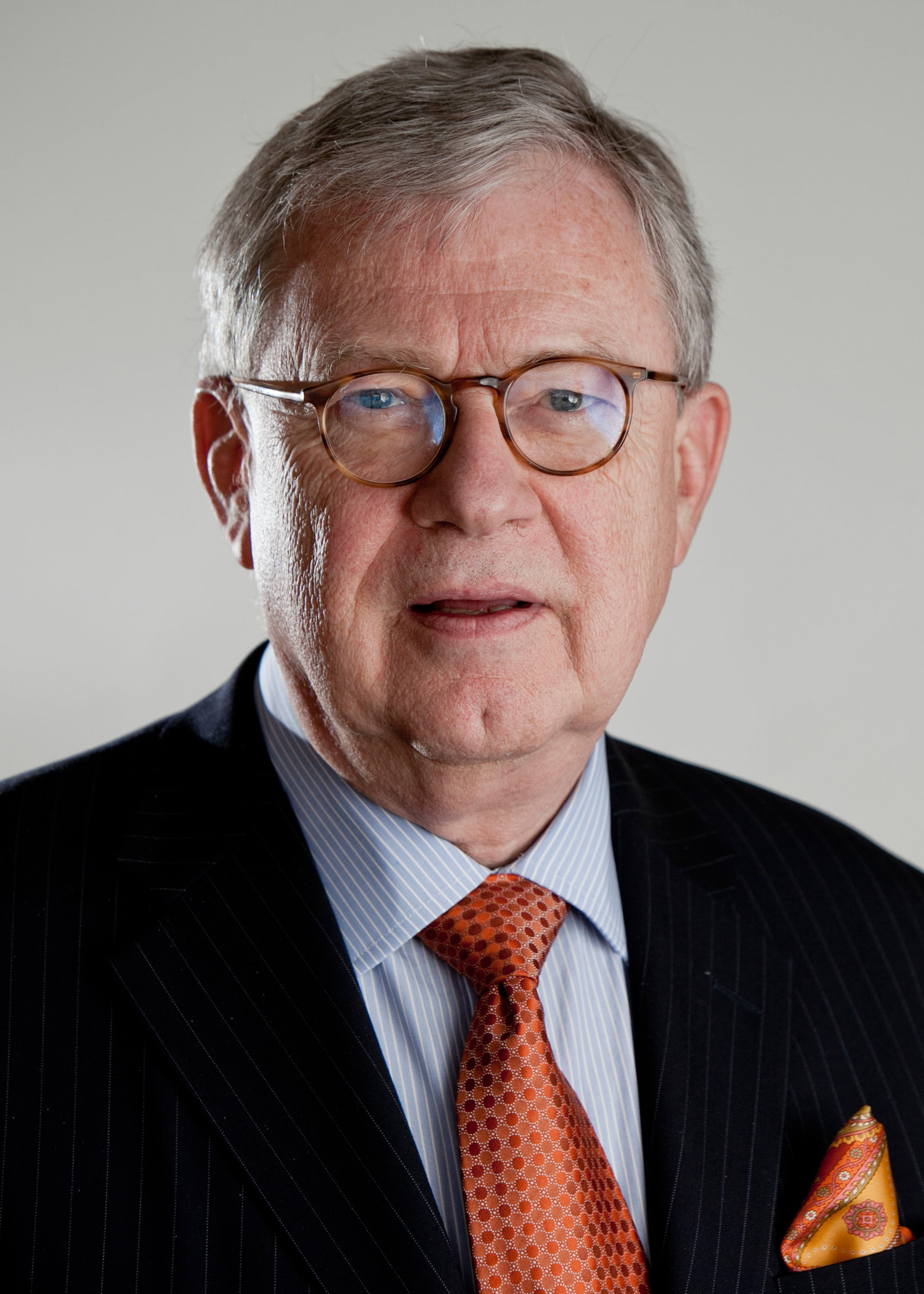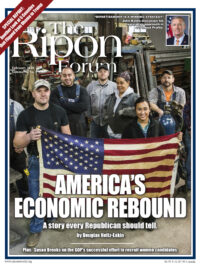
What country has the oldest political party in the world? If you guessed America, you are right. In fact, the United States not only has the oldest political party, but the third oldest party in the world, as well.
The Democratic Party was founded in 1832 to reelect Andrew Jackson, while the Republican Party was founded in 1854 to oppose slavery in the territories. The parties are older than almost every American business, most American colleges, and many American churches. Both have seemed to face extinction in the past, and both have rebounded to be competitive again. How have they done it?
Veteran political observer Michael Barone provides an answer to that question in his latest book, How America’s Political Parties Change (And How They Don’t). In it, Barone — who serves as a resident fellow at the American Enterprise Institute and writes a column for the Washington Examiner — argues that both parties have survived by adapting, swiftly or haltingly, to shifting public opinion and emerging issues, to economic change and cultural currents, and to demographic flux.
At the same time, Barone argues, each party has maintained a constant character. The Republican Party appeals to “typical Americans” as understood at a given time, and the Democratic Party represents a coalition of “out-groups.” They are the yin and yang of American political life, together providing vehicles for expressing most citizens’ views in a nation that has always been culturally, religiously, economically, and ethnically diverse.
With the 2020 campaign now officially underway, The Ripon Forum asked Barone about the role of political parties today and how the electoral map has shifted in recent years. We also ask him about the election of Donald Trump, which he called a course correction, and whether the country is on track to see another correction this year.
Finally, we ask Barone whether the time is right to establish a third major political party in the United States – which many pundits have long been calling for, and polls indicate a majority of Americans support.
____________________________
RF: At a time when many pundits are predicting the end of political parties, you have written a book arguing that America’s two parties are not going anywhere and are more resilient than ever. Could you talk for a moment about this resilience and why you believe the parties continue to be relevant?
MB: I believe the parties are resilient because each of them has, even while changing its positions on issues many times, maintained a certain basic character, personality, DNA over many years. The Republican Party has always been formed around a core constituency of people considered, by themselves and others, as typical Americans — but who are never by themselves a majority. The Democratic Party has always been a coalition of out-groups—people not considered, by themselves or others, as typical Americans but who taken together can be a majority.
In a nation characterized from its colonial beginnings by diversity — religious, cultural, regional, ethnic, racial, economic diversity — parties of this character can provide an appropriate form of expression and advocacy for the large bulk of a diverse citizenry.
RF: One thing that is evolving is the electoral map. Whereas the Republican base in recent years has been anchored in the South, you write that this base shifted with the election of Donald Trump in 2016 to also include parts of the Midwest. Could you talk about this shift and its implications for the election this year?
MB: This is the first presidential election in some time — I would have to go back over the data to see just when, or if ever, this has been the case — that the Midwest has voted more like the South than like the East or West. (By the way, I depart from the Census Bureau definition of the regions by assigning Delaware, Maryland and the District of Columbia to the East rather than the South.)
“The Republican Party has always been formed around a core constituency of people considered, by themselves and others, as typical Americans — but who are never by themselves a majority.”
The Midwest’s increasing resemblance to the South was largely the result of vote switches outside the Midwest’s major metro areas (which I define as those areas with a one million-plus population and in addition I also include metro Madison, Wisconsin). I call these areas, which include about half the Midwest’s population, the Outstate Midwest. Majorities of voters there are non-college whites, with much smaller percentages of white college graduates, blacks, and Hispanics than you find in the Midwest’s major metropolitan areas.
RF: Let’s talk for a moment about the President. You argue that his election did not represent a “gigantic electoral upheaval” but was rather a “course correction.” Could you explain what you mean by that and do you think we are on track to see another course correction this November?
MB: The number of voters switching parties between the 2012 and 2016 presidential elections was much lower than those between, for example, the 1972 and 1976 presidential elections or the 1988 and 1992 presidential elections.
Starting in the 1994 congressional election and the 1996 presidential election, we have had relatively static voting patterns — polarized partisan parity, I call it. Only three states changed presidential parties between 2000 and 2004, for example, and only two between 2008 and 2012. The best way to predict any electoral vote or congressional race in this period was to predict that it would be the same as the previous election. 2016 was obviously a change from that pattern – in popular votes certainly, but even more in electoral votes. Fully 100 electoral votes (ignoring faithless electors) changed parties between 2012 and 2016, all from Democratic to Republican, in Florida, Pennsylvania, Ohio, Michigan, Wisconsin, Iowa, and the 2nd congressional district of Maine.
If that’s a course correction, we had one. Whether there’s going to be another course correction in November 2020 is a big question to which the voters will provide an answer in ten months.
RF: How about the Democrats — for all the talk about Donald Trump remaking the GOP, the fact of the matter is that the Democrats are in the middle of their own debate about the future direction of their party. Any predictions about how that debate is going to play out?
MB: No. It seems like a lot of energy in the Democratic Party is on the left. But it’s not clear that the bulk of Democratic voters are like their activists or putative leaders.
RF: Finally, a question going back to the resiliency — and relevance — of our two party system. Polls show that a majority of Americans favor the creation of a third major political party. Do you see that happening anytime soon?
MB: Poll questions eliciting majorities for a third political party are a subgroup of what I call “Wouldn’t it be wonderful if” poll questions. You ask people if they’d like free health care, free college or free Ben ‘n’ Jerry’s ice cream, and big majorities will say yes. They haven’t given much or any thought to this possibility and it sounds like fun. But when people learn more they take a different and usually dimmer view. A prime example is the response to Elizabeth Warren’s Medicare for All promise.
“The number of voters switching parties between the 2012 and 2016 presidential elections was much lower than those between, for example, the 1972 and 1976 presidential elections or the 1988 and 1992 presidential elections.”
Structural factors work strongly against third political parties: the Electoral College, the single-member district for all House and Senate members and most state legislature members. But more than that is operating. I have already explained why I think the basic and enduring character of our two political parties is particularly suited to providing one (or sometimes even two!) acceptable choices and vehicles for political expression of a large majority of people in what has always been an unusually diverse nation.
The key test case came in 1912. A third party, the Progressives, nominated Theodore Roosevelt and ran him against the incumbent Republican and the Democratic challenger. Roosevelt was as strong a candidate as any third party could ever field: a man who had served seven years as president, demonstrating his competence and surefootedness many times over. In 1904 he won the highest percentage of the popular vote in any race between the Republican and Democratic parties up to that point: he had 100 percent name and substantive identification. In addition, the Progressive party ran candidates in a majority of non-Southern congressional districts.
Yet Theodore Roosevelt lost, running second, and Progressive candidates won only a handful of House seats. By 1916, the Progressives were essentially gone. Roosevelt was back in the Republican fold, and might well have been the party’s 1920 nominee had he not died in 1919. Third party Progressive-type candidates ran only regionally, in the heavily German- and Scandinavian-American Northwest (Wisconsin, Minnesota, North Dakota.) The 1924 candidacy of Robert LaFollette under the Progressive label was a regional candidacy of this sort, like Strom Thurmond’s in 1948 or George Wallace’s in 1968 — not a third party as a potential national competitor.
Ross Perot did attempt such a candidacy in 1992, and despite widespread public recognition and positive attitudes, still lost — and did far worse in 1996. Donald Trump was 46 and 50 years old in those election years, and I suspect that Perot’s defeat was one reason he did not run as an independent or third-party candidate in 2016 and instead chose to run as a Republican, however sketchy his connection with that party had been theretofore.




